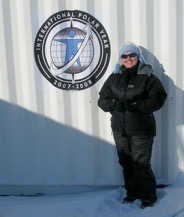Polar Boundary Layer oxidation dominated by HOx and halogens in Spring: COBRA
March 2008
In the light-limited and dry polar atmosphere, OH and HO2 levels are expected to be minimal. However, as part of the COBRA project affliiated with the International Polar Year 2007, we measured OH and HO2 in the spring-time polar boundary layer of northern Quebec. Surprisingly high levels of OH and HO2 were generated from the photolysis of species such as ozone and formaldehyde (HCHO).

P. M. Edwards, M. J. Evans, R. Commane, T. Ingham, D. Stone, A. S. Mahajan, H. Oetjen, J. R. Dorsey, J. R. Hopkins, J. D. Lee, S. J. Moller, R. Leigh, J. M. C. Plane, L. J. Carpenter and D. E. Heard: Hydrogen oxide photochemistry in the Northern Canadian spring time boundary layer, Journal of Geophysical Research, 116, D22306, doi: 10.1029/2011JD061390, 2011
S.J. Moller, J.D. Lee, R. Commane, P. Edwards, D.E. Heard, J. Hopkins, T. Ingham, A.S. Mahajan, H. Oetjen, J. Plane, H. Roscoe, A.C. Lewis, and L.J. Carpenter: Measurements of nitrogen oxides from Hudson Bay: Implications for NOx release from snow and ice covered surfaces, Atmospheric Environment, 44(25), 2971-2979, 2010
A.S. Mahajan, M. Shaw, H. Oetjen, K.E. Hornsby, L.J. Carpenter, L. Kaleschke, X. Tian-Kunze, J.D. Lee, S.J. Moller, P. Edwards, R. Commane, T. Ingham, D.E. Heard, J.M.C. Plane: Evidence of reactive iodine chemistry in the Arctic boundary layer, Journal of Geophysical Research, 115, D20303, doi:10.1029/2009JD013665, 2010